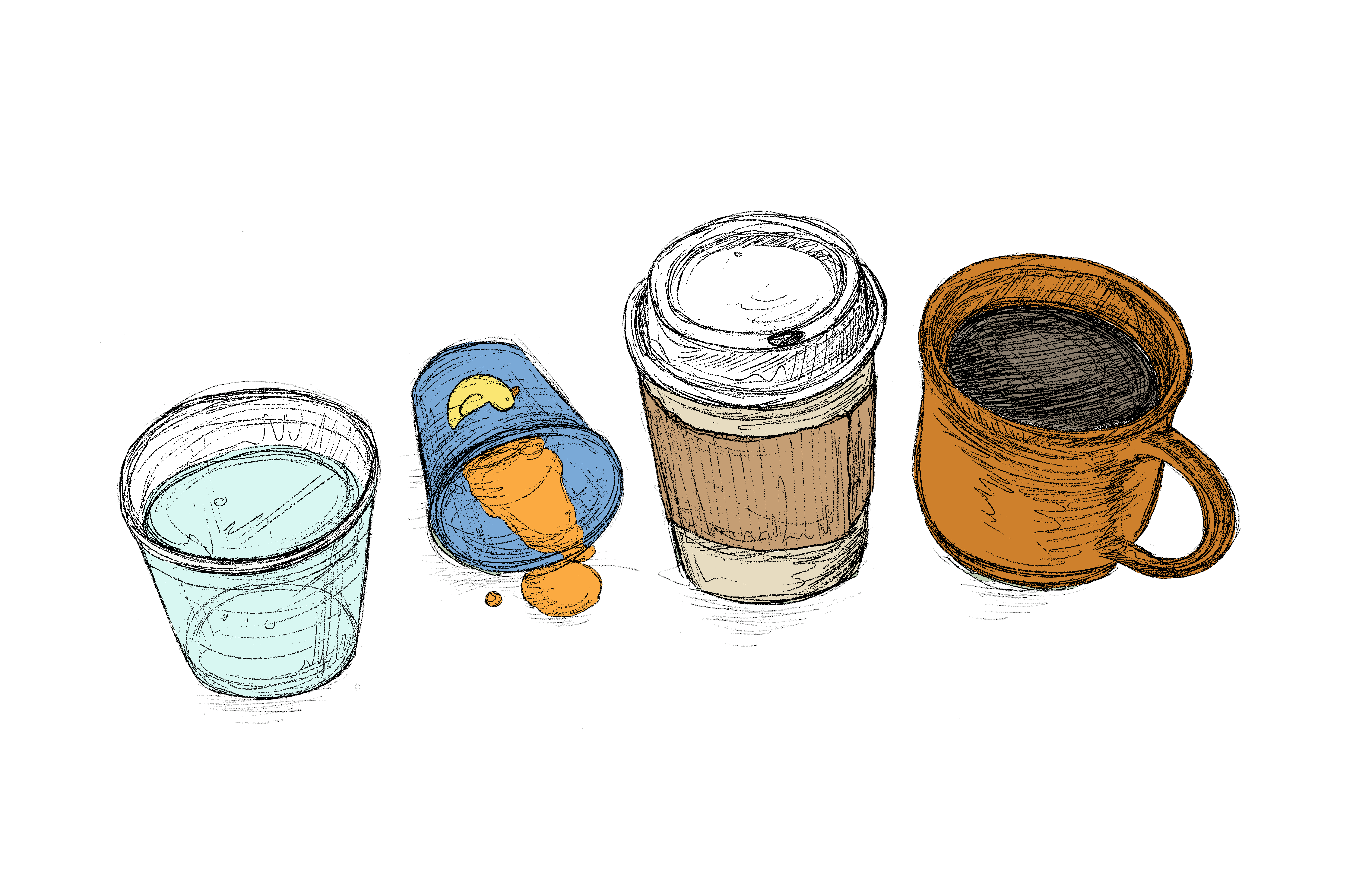Climbing a Mountain
It’s an overused metaphor in nearly all aspects of life. Business executives, leadership gurus, pastors, and personal trainers love to talk about scaling the mountains in our lives. And, if you were to ask any of them exactly how we scale those mountains, what is the answer?
Come on . . . you know it.
It is some iteration of “take the next step,” or “do the next right thing.” But what happens when there is no next step? To whom would you turn to know where to go?
Audio Companion
Rock Climbing Gyms
You might consider visiting a rock-climbing gym; however, if you’ve ever visited a rock-climbing gym (or seen pictures on motivational posters), then you know it can be a little intimidating.
Walls extend for several stories, and fake rocks of various sizes and colors scatter along the walls throughout the gym. Some of the walls jut out at funny angles, creating extra challenges for seasoned climbers. And then there are the people who already seem to know where to go and what to do, dangling 30-feet in the air with ropes and carabiners and funny-looking curved shoes yelling “take” or “slack” or other jargon to their partner below.
But as you begin to adjust to the chalky atmosphere, the click of the carabiners, and the movements of the climbers, you might also notice that those brightly colored rocks are not as scattered as they seem. They’re called “holds” and they are put in place with care and intentionality by Todd Stebbing.
Routesetting
Todd is the Head Routesetter at Cultivate Climbing, a rock-climbing gym in Asheville, NC (and one of the oldest rock climbing gyms on the east coast). Routesetters create paths (or routes) out of the various holds, and the path he or she creates will lead you from the ground below to the top of the wall above. But the journeys to the top are all different, and they are designated by color-schemes.
Each color represents a “route,” and each “route” has a difficulty-level associated with it. There are eight difficulty levels to the routes at Cultivate. The first level allows anyone to be able to climb – whether it’s their first day of climbing or their thousandth. The eighth level is for serious climbers who want to be challenged on their journey.
Todd places these holds on the assorted walls throughout the gym and rotates the routes on a weekly basis, so they don’t become static.
Creating a Path
A scraggly beard and friendly brown eyes emerge from a hoodie that is pulled over his ball cap, Todd says, “Routesetting is my form of art. When we take all the holds off the wall, we have a blank canvas; and as routesetters, we get to look at the wall, look at our room full of holds, it’s like our paint brushes and our paint colors and styles and shapes and everything. And we get to be the ones to create this path for people to climb.”
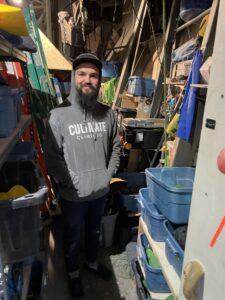
Personal Journey in the Context of Community
Devin Deholl, the owner of Cultivate reflects that, as with life, rock-climbing is both intensely personal and completely a group activity. Both Devin and Todd have experience with other sports, but for them, rock climbing is the only sport that allows for such a personal journey within the context of community. In a recent meeting with his team, Devin reflects, “We are climbing alone, but we’re here in a community and there are people who are catching us and keeping us safe and that we’re trusting; and that’s how we’re existing as climbers and existing in the world.”
Devin’s team is dedicated to helping others grow. Rock-climbing has been that in their life, and they want to pass that along to others. Christine Oglesby, one of Cultivate’s climbing instructors also leads wilderness adventures for women recovering from addiction. Another of the instructors, Jessi Davis owns an acupuncture clinic in West Asheville (Asheville Community Acupuncture) to help people manage stress and pain.
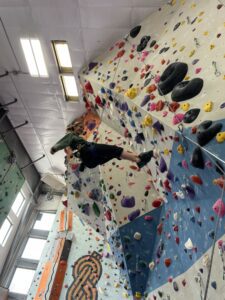
Painting with Holds
The team at Cultivate wants to see people made whole and well, but it is up to Todd and his team of routesetters to create journeys that will facilitate that growth. And so, as he stares at his blank canvas, he begins painting with the various holds by deciding what difficulty level he wants to create with any given route.
He draws inspiration from all over, but much of his inspiration comes from climbing real rock walls in nature. He says, “Sometimes I’ll climb outside and be like, ‘Wow! That was a really cool sequence. Let’s try to set something similar.’” And the routes Todd sets are the foundation for all of climbing. They are the basis for training and climbing that can eventually help climbers transition to outdoor climbing themselves.
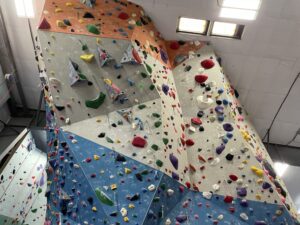
Solving Puzzles while You Exercise
At Cultivate, routes are identified by color. So, when you see a rock-climbing wall with all those colors scattered across it, each of those colors represent a separate route. And the holds in each color are some combination of five primary types (each of which require a different grip strategy).
There are jugs, crimps, slopers, pinches, and pockets. The jugs are the easiest to hold, and you will see many of them on beginner-level routes. Where the holds are placed, the direction they are turned, and how each one leads to the next is an intentional choice to help the climber solve the mental and physical puzzle of making it to the top of the wall. Indeed, beginners might not stick to just one color. They may decide to use whatever hold is closest and feels best. This is called climbing “rainbow.”
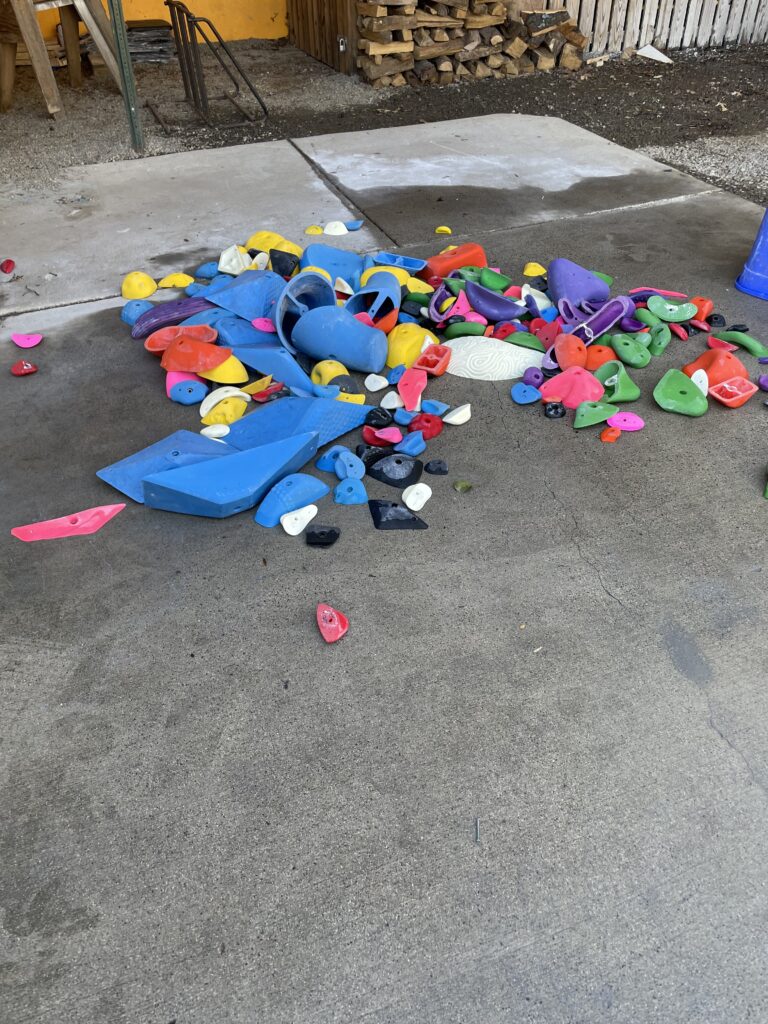
Catalina Ortero, Cultivate’s Marketing Manager, moved to Asheville to care for her grandmother who had Alzheimer’s. She is intrigued by how climbing is both physical and mental work, and can therefore be a very emotional experience, “It’s like trying to solve a puzzle while you exercise.”
Crowdsourcing the Journey
And though the route is responsible for leading others on this journey, once Todd sets a route, the determination of its difficulty is out of his hands. Part of the process of routesetting is called forerunning, which occurs when the routesetters and other staff climb the new route and provide feedback as to which difficulty-level they think it should be. It is based on consensus and experience. After forerunning there may be some tweaking and resetting of holds based on the feedback, and then the route is opened to the rest of the gym.
Everyone has a different experience on the routes that Todd sets. Climbers talk about how embodied the sport is. You have to be very aware of your body, your movements, and where you’re going next. Todd is 6 feet tall with a lot of climbing experience, so his journey along any given route is going to be different than Zoe Brodsky’s, another of the routesetters on Todd’s team. She is 5’ 1” and has a background in dance, so she experiences the route quite differently than Todd does.
Climbing for Everyone
And these routes are designed with not just the traditional climber in mind. General Manager, Blaikely Thompson reflects, “Literally everybody can climb. I couldn’t try to start playing NFL football, but anyone can come to the gym and rock climb.” When she says this, the rest of the team chuckles and tells her that she might be able to play NFL football.
But as she talks about the accessibility of rock climbing, she mentions “Adaptive Climbing” which Cultivate instructor Jessi Davis, defines as “climbing for folks who have different limitations within their bodies or minds,” as she recalls helping instruct somebody with only one leg just a few days prior.
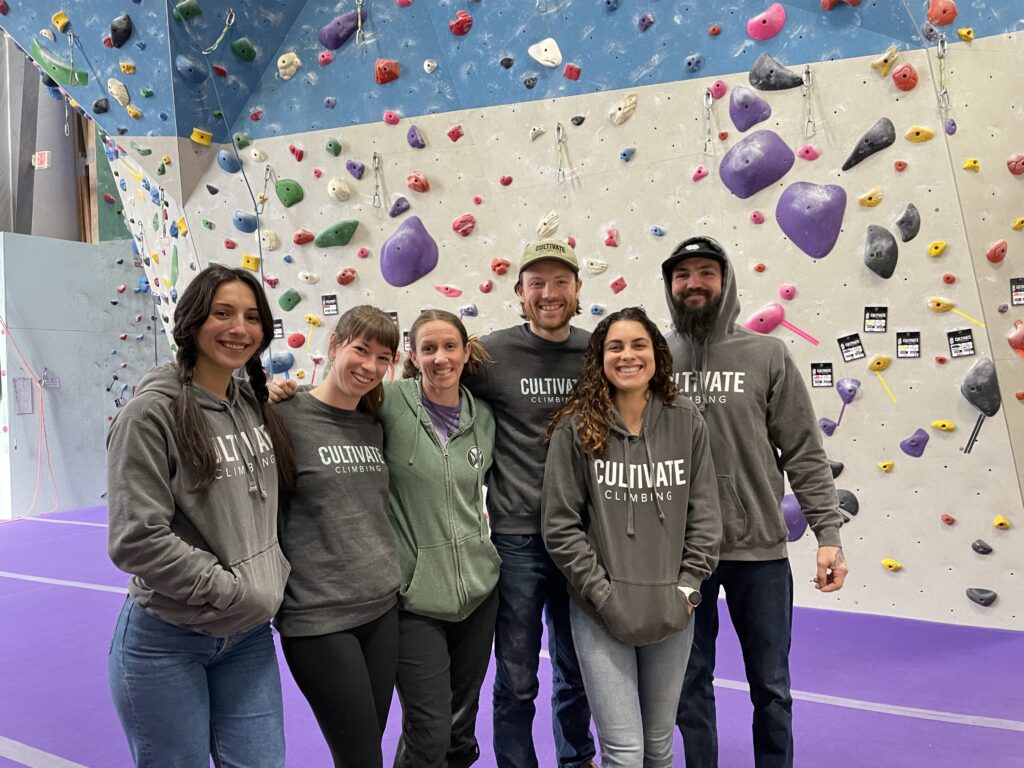
Conclusion
So, what is the next step when you’re climbing the mountain? The climbing community would tell you that much of that depends on who you are and what route you’re on. But whether it’s setting the route, providing instruction, or keeping you safe as you climb, they are there to mentor and help (one might even say cultivate) you along your journey.
